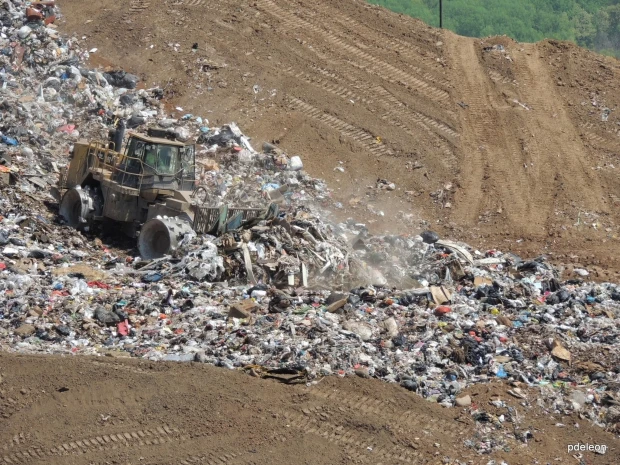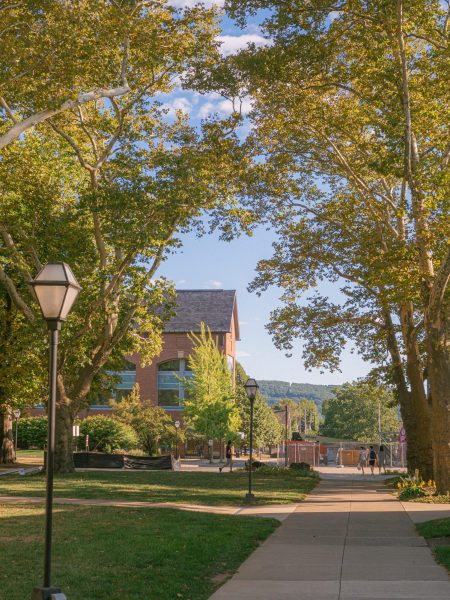Lehigh Dump’s Expansion Brings Environmental, Residential Concerns
Last year, the Lower Saucon Valley Council voted 3-2 to pass a zoning amendment that would essentially pave the way for the Lower Saucon Valley landfill expansion. It’s disgraceful that this expansion could pass when dozens of locals showed up to the council meetings, asking them to consider their concerns, in addition to the formation of an entire group against the expansion.
You may have noticed “Dump the Dump” signs placed on local properties and roadways, linking to a website objecting to the expansion, with locals forming a group jointly protesting it. Many locals have been petitioning and protesting against the landfill, with residents suing over the fact that the township’s Zoning map wasn’t adequately advertised to them.
Residents have raised an influx of concerns, citing environmental, residential, and economic damages due to the expansion that were not properly vetted by Zoning laws. For a short explanation, Zoning laws essentially ensure that property is utilized and developed for the right purposes, considering geography, environmental and residential concerns.
These laws matter since they are one of the biggest protections for the natural environment and residents from damaging infrastructure. For example, Zoning laws can prevent a vast parking garage from being built in front of a beautiful lake-view hotel or a loud disco in the middle of a city with quiet ordinances.
There are dozens of examples, and reasons why these laws matter, but their essential purpose is to protect residents and the environment.
I intend to start a new regular feature explaining why these laws are necessary, specifically referencing certain debates happening around the Lehigh Valley. As a short disclaimer, I’m not a master of Zoning laws, so keep that in consideration while reading–these are just my personal opinions and interpretations about how they should be regulated.
The landfill expansion would include 275 wooded acres of land, decreasing the gap between the Lehigh River and the local waterways that feed into it. Not only is this land sloped, but the Bull Run Natural Heritage Area stream intersects the proposed expansion land, almost guaranteeing its pollution or, worse, collapse.
This expansion would nearly double the Bethlehem Landfills size, which is operated by Waste Connections. Although the landfill is a 15-minute drive from Moravian’s campus, the expansion has brought an influx of student concerns, especially from students studying science.
“It sounds like a comically evil thing to do,” said biology and Spanish major Bri Whalen ‘25.
The City of Bethlehem announced that it would not formally join the lawsuit, with Mayor J. William Reynolds stating that he is following legal advice not to get the city involved.
“The loss of 275 acres of forested lands is nothing short of heartbreaking,” said environmental science major and United Student Government Secretary of Environmental Sustainability Todd Reedy ‘24.
“The removal of a shared habitat that works in tandem with the Lehigh River will send cascading environmental detriments throughout the Lehigh Valley as a whole,” he said.
Expansion of the landfill would cause indefinite harm to the local environment and ecosystems, especially in the Lehigh River. In 2020, the Lehigh River watershed polluted thousands of pounds of toxic chemicals in local waterways and was ranked second in the nation for total cancer-causing chemicals.
“Deforestation alone not only removes the homes of everything living in the area, but it also removes natural runoff protection that prevents the Lehigh River from becoming any worse than it is now,” said Reedy.
Pennsylvania’s Lehigh River is currently ranked 9th in the nation for its pollution, and this is only one reason why the Clean Water Act needs to be expanded and improved.
Additionally, the same source reported that the Whitehall Cement Plant ranked in the top four nationwide for toxic releases to local waterways–one of the oldest cement plants in the U.S., and it seems like environmental concerns are not considered at all.
Considering the current state of the Lehigh River, I can’t understand how or why Zoning laws would allow further contamination. Residents swim, tube, and drink from the Lehigh River–it should not worsen.
“275 acres of trees is a sucker punch to the mission to reduce greenhouse gas emissions in humanity’s battle against climate change. Losing these trees will remove this land’s ability to store carbon from the atmosphere, and a landfill makes this even worse, as the breakdown of solid wastes in landfills produces methane, a very potent greenhouse gas. In short, we lose the good and get even more bad,” said Reedy.
The Lehigh River feeds into multiple private wells and sources of drinking water, which raises concerns, as the water is already not good quality.
In addition to the already degrading water quality, expanding the landfill would bring an influx of environmental damage to residents, flora and fauna. This doesn’t even address how the expansion would essentially destroy 275 acres of wooded lands and every habitat that exists within.
I’ll briefly address only part of the devastation that deforestation causes: desertification, soil erosion and higher likelihoods of flooding–not even beginning to address the environmental concerns for the ecosystems within that forest.
“If we produced less waste, then we wouldn’t have the “need” for this landfill. I hope that in the future, we think about consuming and throwing away less to combat the notion that a heavily-polluting landfill is necessary,” Reedy said.
In addition to the host of environmental damages, the expansion of the landfill would lower the residential value of the area surrounding the expanded landfill, as it has already done to the current houses around the dump.
Many nearby residents have continuously complained of the foul-smelling dump, not including the 2018 instance of a “strong and persistent landfill gas odor on Pen Argyl Road, and a strong, persistent sewage odor on Grand Central Road,” prompting fears of a gas leak or mismanagement by the dump company.
A quick Google search will bring dozens of Letters to the Editor, articles, or other web pages related to the Lower Saucon Valley Landfill, dating back to before 2012, and usually concerning the putrid stench emitted from it. The landfill stinks in general but becomes periodically worse and more noticeable.
Residents don’t want to open their doors to the smell of trash; it’s clear: they already are not happy with the current landfill, so why expand it?
Most recently, residents filed an appeal within the Northampton County Court of Common Pleas in March, hoping to cease the entire expansion.
We’re entering a historical period where our environmental footprint will decide if the earth can recover from the current climate change thrust upon it. It must be a joint effort to protect it before it degrades to the point of no return.
Stand up for the environment. Make a difference because it’s clear that the government won’t do it for us.













♂️ • May 2, 2023 at 12:23 pm
Every single day we get closr and closer to the planet on WallE. Incredibly sad